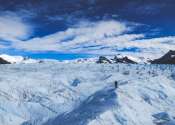IceCube detection of a high-energy particle proves 60-year-old theory
On December 6, 2016, a high-energy particle called an electron antineutrino hurtled to Earth from outer space at close to the speed of light carrying 6.3 petaelectronvolts (PeV) of energy. Deep inside the ice sheet at the ...









